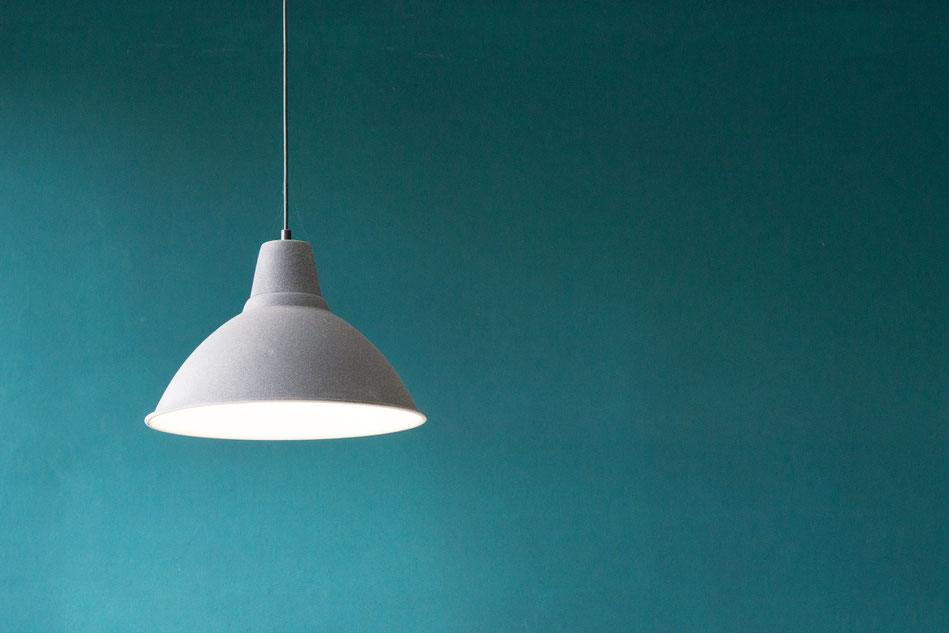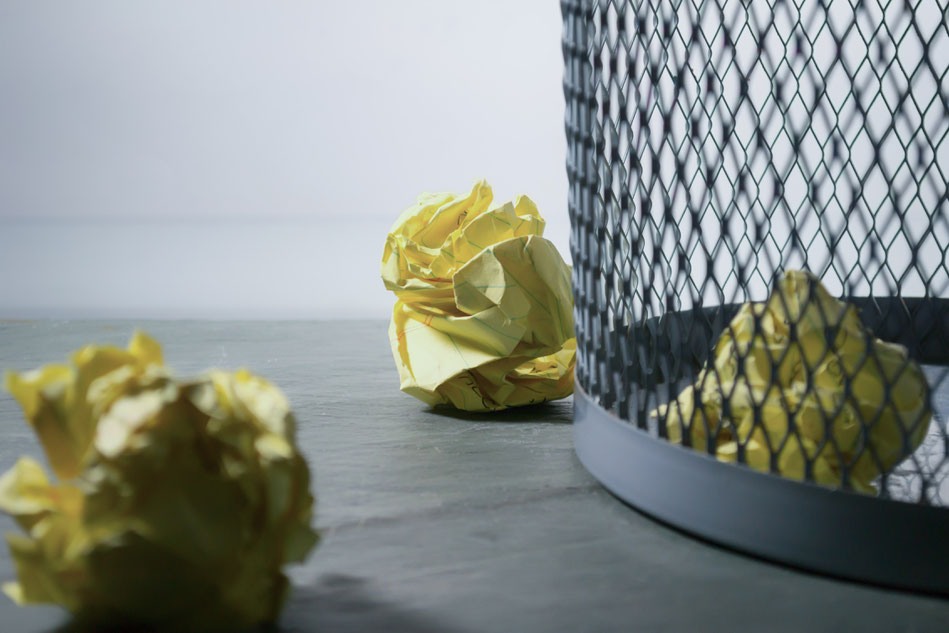7 simple ideas for more sustainability in the office
Reading time: 11 minutes
Sustainability is a big issue in many of our lives these days - thankfully! Whether at the bakery around the corner, your favorite bar, or even on the train, more and more businesses are upgrading and taking big steps toward a more sustainable future. But something is also happening in Germany's offices. Employees working in the field of sustainability can now be found in many companies, promoting commitment in the relevant areas and finding new approaches.
Simply having the houseplant from the hardware store around the corner in the office does not make an office sustainable. However, a little orientation to everyday habits can go a long way.
We'll show you how you can make a small contribution to environmental protection in your everyday working life and make your office greener in no time at all. But let's get this straight: plants aren't the start, they're the cherry on top!
What exactly does "sustainability in the office" mean?
Sustainability is not a term that can be defined in two sentences. However, just as in our private lives, the following also applies to the office: Every product and process used can be optimized to conserve resources. In the long term, this can often make processes even more efficient and in turn save money. Ideas for more sustainability in the hotel or in the bar, we have summarized in previous articles. Applied to everyday office life, this means constantly questioning the use of printers, coffee machines, and even disposable towels in the bathroom, and looking for possible solutions. To do this, it is unavoidable to create an awareness of the (ecological) expenses, to possibly go new ways and finally to sensitize the entire team for the topic. So here, insight is the first step to improvement. Once sustainability is started, it can then be specifically transferred from the office to the other departments of the company.
To make everyday work a little more sustainable, even just walking to the office and a little mindfulness during the lunch break can make a difference - sustainability in the office may start with each individual, but it can only succeed as a team.
1. save energy in the office
Lunch break and everyone leaves the office? Best time to save energy! "The last one to turn off the lights", our grandparents already knew, and computers can also be safely put into sleep mode. Even the energy saving mode is already better than when the computer is completely switched on, but in the end it only saves about 50% of energy. Today, there are also several ways to shut down several devices at the same time, such as the good old timer. Depending on your daily office routine and work organization, you can find various alternatives that will keep your CO2 consumption in check, even if your colleagues are forgetful.
Our tip: Put a sign on the door and ask the last person to check again whether all devices are really switched off and, if possible, all plugs are removed. The same applies, of course, to the lights in the office and hallways: Turn them off when not in use! Even energy-saving lights are useless if they burn in rooms that are not being used. You can also remedy this by using motion detectors.
If you have air conditioning in the office, it should of course also be switched off after work. However, it is more economical to use a fan or shutters on the windows. Ventilation and heating are also important. Short bursts of ventilation with the heating turned down ensure fresh air and a healthy indoor climate. On the subject of energy, it is best to look for a provider of green electricity that obtains its energy locally from renewable sources in order to be as environmentally friendly as possible.

2. furnish the office sustainably
Sustainability can start with the furnishings: The materials used in everyday office life in particular offer some scope for environmental protection. Certified products, ideally made from recycled materials, make the office greener in no time. A simple step can be taken here, for example, with refillable pens, which do not go straight into the trash after a short period of use. They are also easy to replace with:
- Envelopes without windows
- the recycled paper variant
- Instead of a capsule machine for hot drinks, invest in a good coffee machine and fair trade beans.
These things will not only make your office more sustainable, but the drinks will taste twice as good when enjoyed with a clear conscience. By the way, all tea drinkers should only fill the kettle as much as they absolutely have to. Investing in a stylish thermos flask for the whole office can save electricity and, once again, money.
With TVs and laptops in our own homes, we don't want to have the biggest power guzzlers, so why in the office? So check your (purchased) devices and the next new acquisition but times after the energy efficiency. This is indicated by certain labels such as the Energy Star label. Also make sure that the energy-saving mode is activated on all devices during short breaks, if possible. This not only reduces consumption, but can also save you money.
Green thumb, ahoy! Of course, plants also make your office greener. They clean and humidify the air and create a pleasant working atmosphere. In addition, a jointly maintained green windowsill can also be a super team-building measure in which everyone is happy to participate.
3. reduce waste and separate properly
For all furnishings, including electrical appliances, the rule before thinking about disposal is: Reduce or recycle. Can the old desk still have its own corner for the intern or can the worn-out monitor still be donated sustainably? Give your furniture a second life and save resources from production and disposal. In doubt respect the correct and unavoidable (!) Disposal of old electrical appliances at appropriate collection points.
0,00€ Our petroleum-free shopping bags and shipping bags are biodegradable and water-soluble. Try them and see for yourself.
Sample Pack Bags
Avoiding waste should of course be a high priority in every office anyway. However, the wastebasket does not have to be overflowing with misprints, but also orders can be saved. Try to avoid individual orders as much as possible and collect wishes and necessities for purchases until the end of a fixed period. If possible, order from a retailer. This way you not only have less packaging waste, but also reduce emissions during transport. Ultimately, of course, you also have less effort.
Proper waste separation should not be neglected in the office. Rule No. 1 here is in any case: It can be separated only if something is there to separate. So there should be at least three containers for packaging, paper and residual waste. After all, this not only ensures that valuable resources can be reused in the best possible way, but also gives you an overview of the waste that still has potential for savings in your office.You can find inspiration on how to save on unnecessary packaging wastehere: .

4. avoid waste at lunch
As mentioned above, sustainability is always a team effort. Therefore, talk to your employees about the topic and encourage them to do their part! Even lunch breaks and snacks can easily become a lot greener. A small stock of bread and food cans in the office kitchen can work wonders when ordering ToGo during the break. Stainless steel cans are particularly suitable here, but collected preserving jars from the last joint after-work can also be put to good use again. Of course, employees can also bring their prepared snacks and meals in sustainable cans.
Fresh regional and seasonal ingredients also make the environmentally conscious lunch a whole lot healthier. By the way, glass or stainless steel bottles on the desk are not only sustainable, but also tempt you to keep your body hydrated in between meals.
Drinking together can also be good for the environment: making tap water available to employees in glass carafes not only saves you delivery trips and costs, but also avoids wasting resources. If soft drinks are required, you can also use glass bottles.
If you have a shared refrigerator, then simply set up a compartment for things that are left over, that someone didn't like or that are already close to their expiration date - at least one colleague will be happy and you can easily banish food waste from your daily work routine!
0,00€ The first truly plasticfree and uncoated Cups made from 100% cellulose. Don't believe us? See for yourself!
Sample Pack To-Go
5. save the environment on journeys and business trips
A point that is as simple as it is important: when commuting from A to B, the environment can be protected quite easily and not necessarily inconveniently; the same applies to important meetings. Is the trip in the morning by car really unavoidable or can cycling or public transport be an alternative? Of course, cycling is much better for your health (and your nerves in traffic jams), and public transport is a relaxed way to catch up on breakfast or check the most important news. Alternatively, you can inspire your employees to carpool together. All of these options can save you money and often save you valuable time.
For business trips, the necessity should be questioned before the appointment. Does it really have to be the flight to the other end of the world or even the long-distance drive? Since Corona at the latest, companies have known that video calls can also replace such trips. The most sustainable out-of-office meeting is, of course, the one that doesn't exist at all. If a direct appointment is essential, then book your employees a (long-distance) train trip before you search the flight portals on the web. Another double advantage: high prices for trips and flights booked at short notice are eliminated.
If you are on a business trip overnight, you can look for sustainable hotels. For tips on how to find them and what eco-friendly hotel deals are out there, check out .

7 Save resources when printing
Asking yourself if something really needs to be printed should precede any print job. Of course, there are documents that are needed in black and white. But these are usually manageable and often offices act more on the principle of "Oh, one more or less". So, check more often beforehand whether storage on the computer in cloud systems is not sufficient for further work, because even contracts can be signed digitally today.
If you print, then please do it properly: modern devices can be set to print on both sides of the page, so that less paper has to be used. Speaking of which, sustainable (recycled) variants should also be used here, just as with printer cartridges. Refilling can also eliminate a lot of unnecessary packaging waste here.
Printers that only print should be a thing of the past in any sustainable office. Multifunction devices that can also scan and copy documents save a lot of electricity. What's more, when your colleagues see that the line in front of the machine is once again a little longer, some of them may think twice about whether they really want to print at that moment. As already mentioned, misprints should not be thrown in the wastebasket immediately afterwards, but rather collected in a pile and used for sketches, notes and spontaneous brainstorming sessions.
How quickly can everyday office life become more sustainable?
Pretty quickly, brainstorming together brings the solution! Becoming greener in the office works best with everyone, so tackle the topic as a team: sit down together and think about where resources can be conserved in the future and thus save money in the long run. You will see that there are numerous starting points. The key here is not to lose your cool, but to bring more green into the office step by step. A more sustainable collaboration and more satisfaction can also bring you New Work approaches . With a few notes in the appropriate places, you can remind your employees again and again to put the ideas into practice - from now on, perseverance and good will are your companions on the way to an ecological office! The likelihood that a little bit of the sustainability wave will spill over into other areas of your employees' lives is more than high.